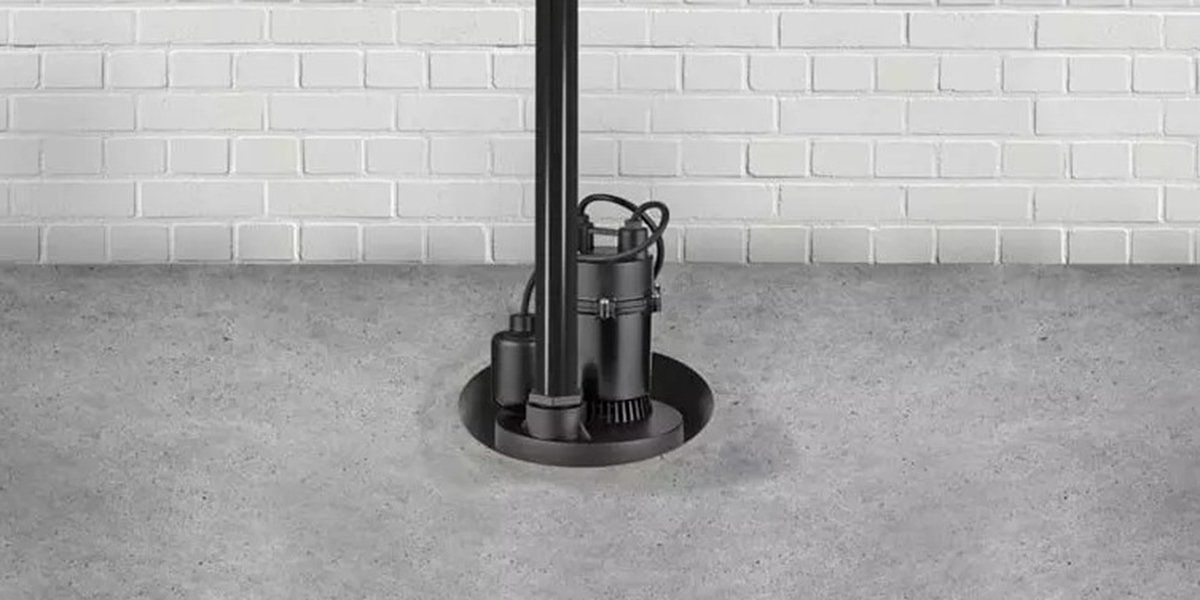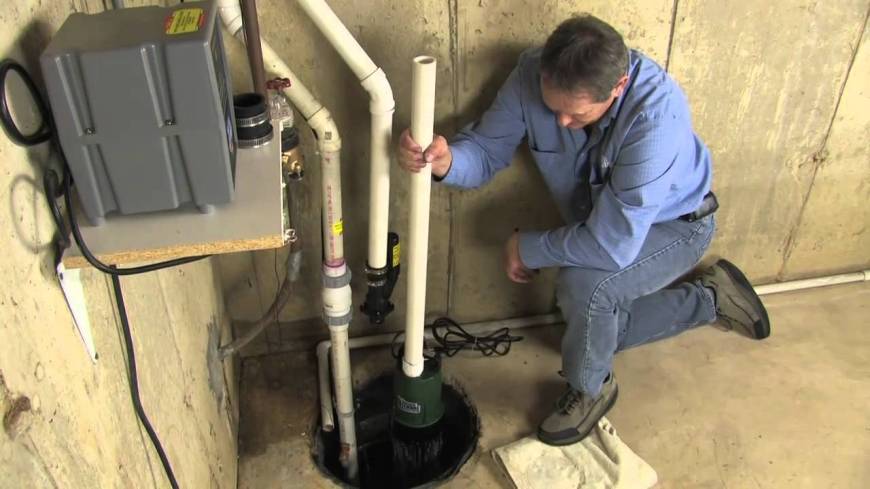Simple Tips for Cleaning Your Sump Pump
Simple Tips for Cleaning Your Sump Pump
Blog Article
We have stumbled on this great article about How to Care for Your Sump Pump down the page on the web and figured it made good sense to share it with you here.

Sump pumps are vital elements in lots of homes, specifically in locations prone to flooding or too much wetness. They assist avoid water damages by efficiently getting rid of excess water from cellars or crawl spaces. However, like any other appliance, sump pumps call for regular upkeep to guarantee they function properly when required one of the most. Cleansing your sump pump is a crucial part of its upkeep, and comprehending exactly how to do it effectively can save you from expensive repair services and potential calamities.
Introduction
Keeping a clean sump pump is crucial for its correct performance and long life. Ignoring this vital job can bring about blockages, breakdowns, and ultimately, water damage to your building. Therefore, discovering exactly how to cleanse a sump pump is crucial for property owners that rely upon these devices to maintain their cellars completely dry and secured.
Indicators of a Dirty Sump Pump
Knowing when your sump pump requires cleansing is vital for stopping prospective malfunctions. Some common indicators that indicate a dirty sump pump consist of unusual sounds throughout operation, minimized water flow, and visible particles in the pit. If you notice any one of these signs, it's necessary to cleanse your sump pump promptly to prevent any type of more issues.
Planning for Cleansing
Before you begin cleansing your sump pump, it's important to take some security preventative measures. Begin by shutting down the power to the pump to avoid any type of electric crashes. Additionally, wear ideal protective gear, such as handwear covers and safety glasses, to protect yourself from dust, debris, and potential microorganisms.
Understanding the Sump Pump
Prior to diving into the cleaning procedure, it's important to have a basic understanding of how a sump pump works. Generally installed in a pit or basin listed below the basement floor, a sump pump includes a number of vital elements, including a pump, a float switch, and a discharge pipe. When water collects in the pit, the float button turns on the pump, which then pumps the water out via the discharge pipeline, away from the structure's structure.
Detailed Guide to Cleaning a Sump Pump
Turning off the Power
Begin by detaching the power supply to the sump pump to avoid any type of mishaps while cleansing.
Looking For Proper Performance
Before re-installing the pump, execute a quick examination to make sure that the float switch triggers the pump properly. Put some water right into the sump pit and observe the pump's procedure. If every little thing is operating correctly, you can rebuild the pump and reconnect the power supply.
Removing Debris and Dust
Use a bucket or a scoop to remove any kind of visible particles, dust, or sediment from the sump pit. Dispose of the particles correctly to stop it from obstructing the pump or the discharge pipeline.
Cleaning up the Pump and Float Switch Over
Once the pit is free from particles, thoroughly get rid of the pump from the pit. Evaluate the pump and the float switch for any type of indicators of damage or wear. Make use of a soft brush or towel to clean the surface areas and remove any type of accumulated gunk.
Purging the System
After cleaning the pump and float button, flush the sump pit with tidy water to remove any type of continuing to be dust or debris. This will help make sure that the pump runs smoothly and successfully.
Upkeep Tips to Keep Your Sump Pump Clean
Along with regular cleansing, there are several maintenance ideas you can comply with to maintain your sump pump in ideal problem:
Final thought
Cleansing your sump pump is an essential aspect of its upkeep and makes sure that it runs successfully when you require it one of the most. By adhering to the steps outlined in this overview and incorporating regular maintenance into your regimen, you can prolong the life-span of your sump pump and secure your home from water damages.
6 STEPS ON HOW TO CLEAN A SUMP PUMP PROPERLY
UNDERSTANDING SUMP PUMPS
Your sump pump plays a crucial role in protecting your home by managing and removing excess water. It primarily functions as a “shield”, guarding your basement against the damaging effects of water accumulation. The pump is housed in a sump pit in the lowest part of your basement, and its job is to pump out any water that collects there.
During heavy rainfalls or when snow melts rapidly, water can infiltrate your basement, posing potential risks like flooding, structural damage, and harmful mold growth. Here, the sump pump springs into action, pumping out the intruding water and directing it away from your home.
SAFETY FIRST
Before cleaning, remember to prioritize safety. Disconnect the sump pump from the power source to prevent any accidental electric shocks. Also, wear sturdy gloves to protect your hands from any sharp or dirty components within the pump.
REMOVE THE SUMP PUMP
After ensuring your safety, the next step is to remove the sump pump from its pit. Doing this might require careful maneuvering as you don’t want to damage any pump components. Once removed, clean the sump pit to remove any accumulated debris or sludge.
INSPECT THE PUMP
Inspect the pump for any visible signs of wear or damage. Check the power cord, float switch, and impeller housing. If any components look worn out or damaged, consider replacing them to ensure optimal performance.
CLEAN THE PUMP
Thoroughly clean the pump with warm, soapy water. Make sure to rid it of any dirt, gravel, or other debris that might impede its performance. You can use a toothbrush to clean the small, hard-to-reach parts of the pump.
REINSTALL THE SUMP PUMP
Reinstall the pump into the sump pit Make sure it’s positioned correctly to remove the water effectively Once it’s back in place, reconnect it to the power source TEST THE PUMP
Finally, pour some water into the pit to ensure the pump works correctly. It should start automatically and begin pumping out the water; if it doesn’t, check the power source and the positioning of the pump.
Remember, while cleaning your sump pump is an essential part of home maintenance, hiring a professional plumber for a thorough inspection and cleaning at least once a year is also important. This will ensure that your pump is in optimal condition, ready to protect your home from potential water damage.
BEST PRACTICES FOR CLEANING SUMP PUMP DISCHARGE PIPES
Regular Inspection: Regularly inspect your discharge pipes, especially during heavy rainfall or snowmelt periods. Look for any signs of blockage or damage. Early detection of problems can prevent serious issues down the line. Periodic Cleaning: Over time, sediment and debris can accumulate in the discharge pipes, impeding the flow of water. Regular cleaning helps keep the pipes clear and functioning efficiently. You can use a high-pressure water jet to effectively clean the pipes. Insulation During Winter: In colder climates, discharge pipes can freeze, blocking the outflow of water. Protect your discharge pipes from freezing temperatures by insulating them with foam pipe insulation. This will ensure the sump pump can continue to discharge water even in freezing conditions. Proper Positioning: The discharge pipe should be positioned to direct water away from your home’s foundation. Improper positioning can lead to water seeping back into the basement. Ensure the pipe is long enough and angled correctly. Installation of a Check Valve: A check valve prevents water from flowing back into your sump pit after the pump has pushed it out. Installing a check valve helps maintain the efficiency of your sump pump and reduces the risk of flooding. Minimize Pipe Turns: Every curve or turn in the discharge pipe can decrease the efficiency of water flow. By minimizing turns and bends in your discharge pipe, you can increase the efficiency of your sump pump. https://www.fullspeedplumbing.com/how-to-clean-a-sump-pump-properly9999/

As a person who reads on How To Effectively Clean A Sump Pump, I assumed sharing that portion was important. Kindly take a moment to promote this blog if you enjoyed reading it. I praise you for being here. Come back soon.
Request An Estimate Report this page